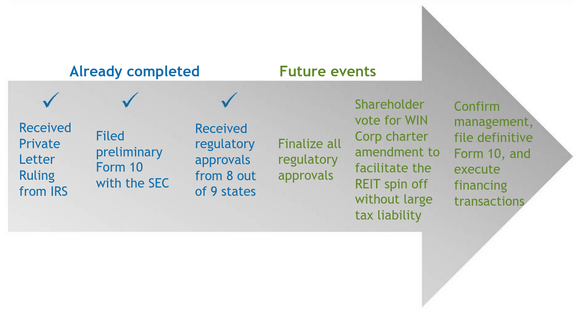Do Corporate SpinOffs Help Or Hurt Shareholders
Post on: 4 Июль, 2015 No Comment

Many spin-offs look cheap when they first come to market, but that has nothing to do with their fundamentals.
Leave it to Wall Street deal-makers to magically create value where there was none before. With the IPO market fairly lukewarm and only a few investors hungry for leveraged buyouts, mergers and acquisitions (M&A), investment bankers are resuscitating that old corporate finance maneuver: the spin-off.
AOL (AOL ) spun off from Time Warner (TWX ) late last year. Barrick Gold’s (ABX ) African operations are now operating as an independent public company. Canadian oil producer, EnCana (ECA ) let go of its flagging Canadian oil sands business Cenovus Energy (CVE ) earlier this year, while Cablevison (CVC ) has approved the spin-off of its Madison Square Gardens assets. Of course, the banks themselves are participants in the action. In April, Citigroup (C ) completed the spin-off of the Primerica (PRI ) insurance group.
A few more biggies are pending. Motorola (MOT ) is to buy back most of its debt and direct the remainder of its cash into a spin-off mobile-phone unit. The long-talked-of split of Motorola’s operations is now expected to take place in the first quarter next year. Meanwhile, John Malone’s Liberty Media (LINTA ) plans to split off Liberty Capita l (LCAPA ) and Liberty Starz (LSTZA ) as asset-backed stocks, transforming them from their current status as tracking stocks. The plan is to exchange shares of the current tracking stocks for stocks in what will now be separate companies. The plan is expected to be tax-free to holders, and should close in late 2010 or early 2011.
The rationale for spin-offs is pretty straightforward: Focus on core operations and streamline both the spinner and the spinnee. They choose the spin-off route over the partial IPO to avoid taxes and dilution of the new company’s shares.
Sure, all of that makes sense for investment bankers and some of the companies. Spin-offs are a nice way for companies to sweep away problems and pocket some extra cash. But don’t forget the important question: Is this exercise any good for shareholders, or is it simply an easy way for a company to get rid of an unwanted business?
Lots of academic studies show that spin-offs, statistically speaking, have a better chance of outperforming the market than the average stock. The big reason: Spin-offs frequently receive less publicity or hype than IPOs, which can lead to undervaluation. Also, index funds tend to sell them quickly because the spin-off is usually not in the index being tracked. This explains why spin-offs often look cheap when they first come to market. Traders exploit that price pattern.

But be careful. Blindly placing bets on spin-off statistics is no formula for market-beating returns. Granted, a lot of spin-offs look cheap when they first come to market. But that has nothing to do with their fundamentals. The challenge for investors is to distinguish keepers from corporate cast-offs. Plenty of spin-offs are dogs, so do your homework.
For starters, spin-offs are typically structured in a way that benefits the parent at the expense of the new spin-off. Let’s face it, a parent will spin off a subsidiary on the stock market if it can’t sell it someplace else for a better price. Companies typically spin off struggling divisions or those that aren’t as profitable or growing as fast their core businesses. They also overload offspring with debt, or dump other kinds of liabilities on them. Another thing: Parent companies like to extract big cash takings from spin-offs. Taking too much, of course, can doom a young company, hamstring an executive team, and upset shareholders.
Don’t get me wrong — a lot of spin-offs work out well. Creating a spin-off can eliminate diffusion of management goals, a problem that goes hand in hand with big, diversified companies. When the aim is to focus on being the best at one or two things, spin-offs make sense.
There’s no alchemy with spin-offs. Importantly, investors shouldn’t fall for the trick of companies off-loading problems. Instead, they should look for a history of profitability or strong performance fundamentals before buying in. Apply the same kind of analysis you would to any other stock.














